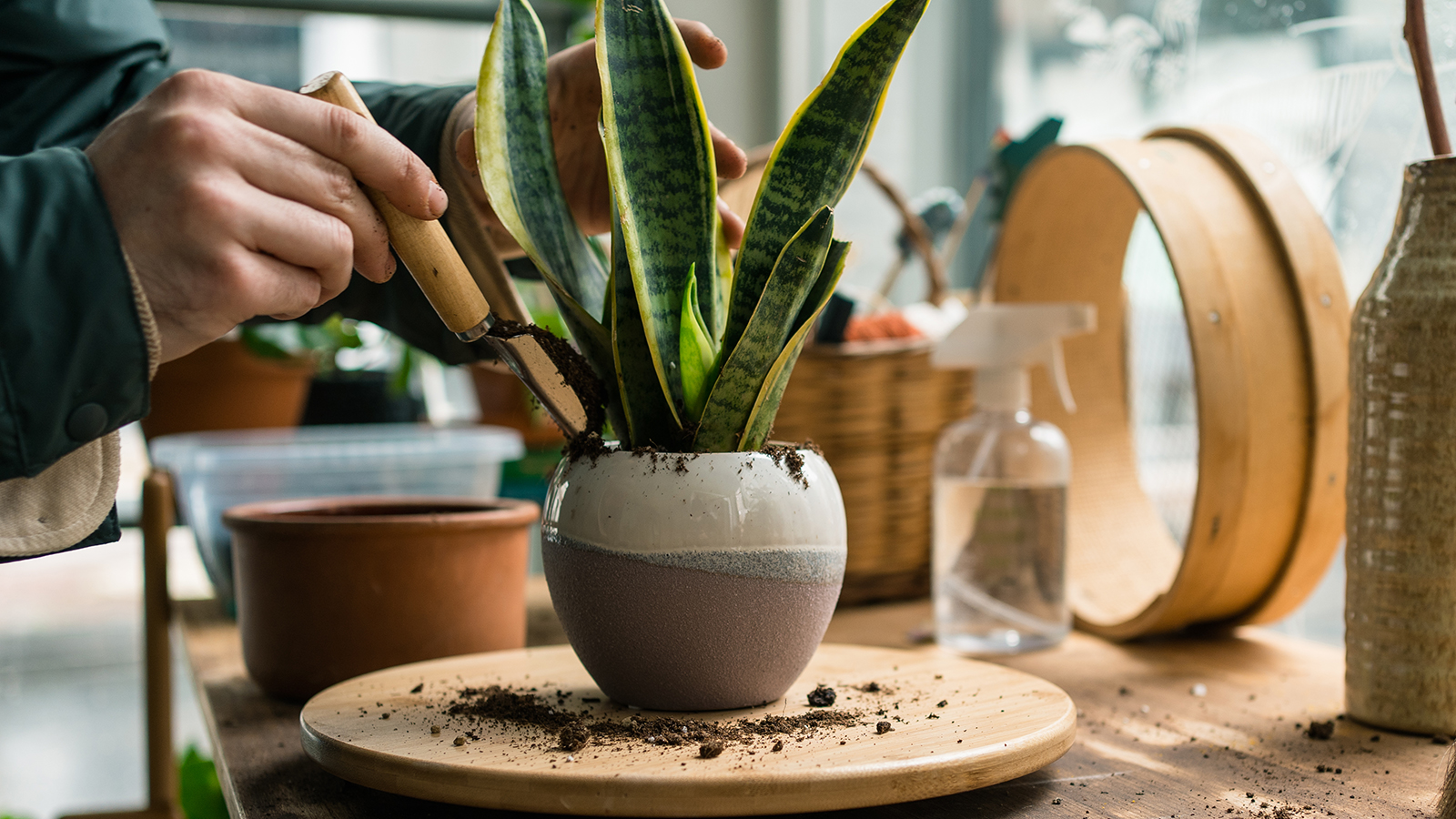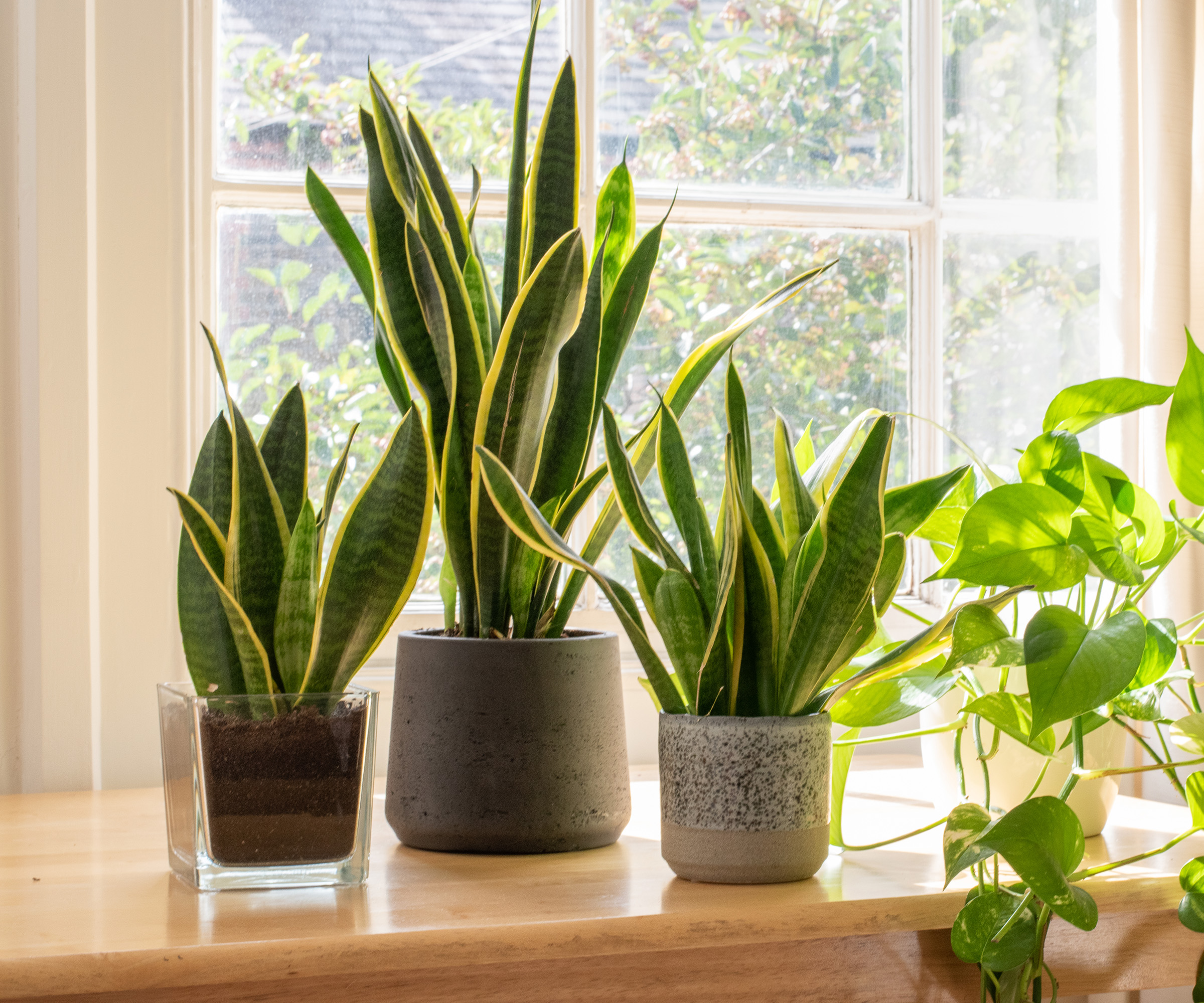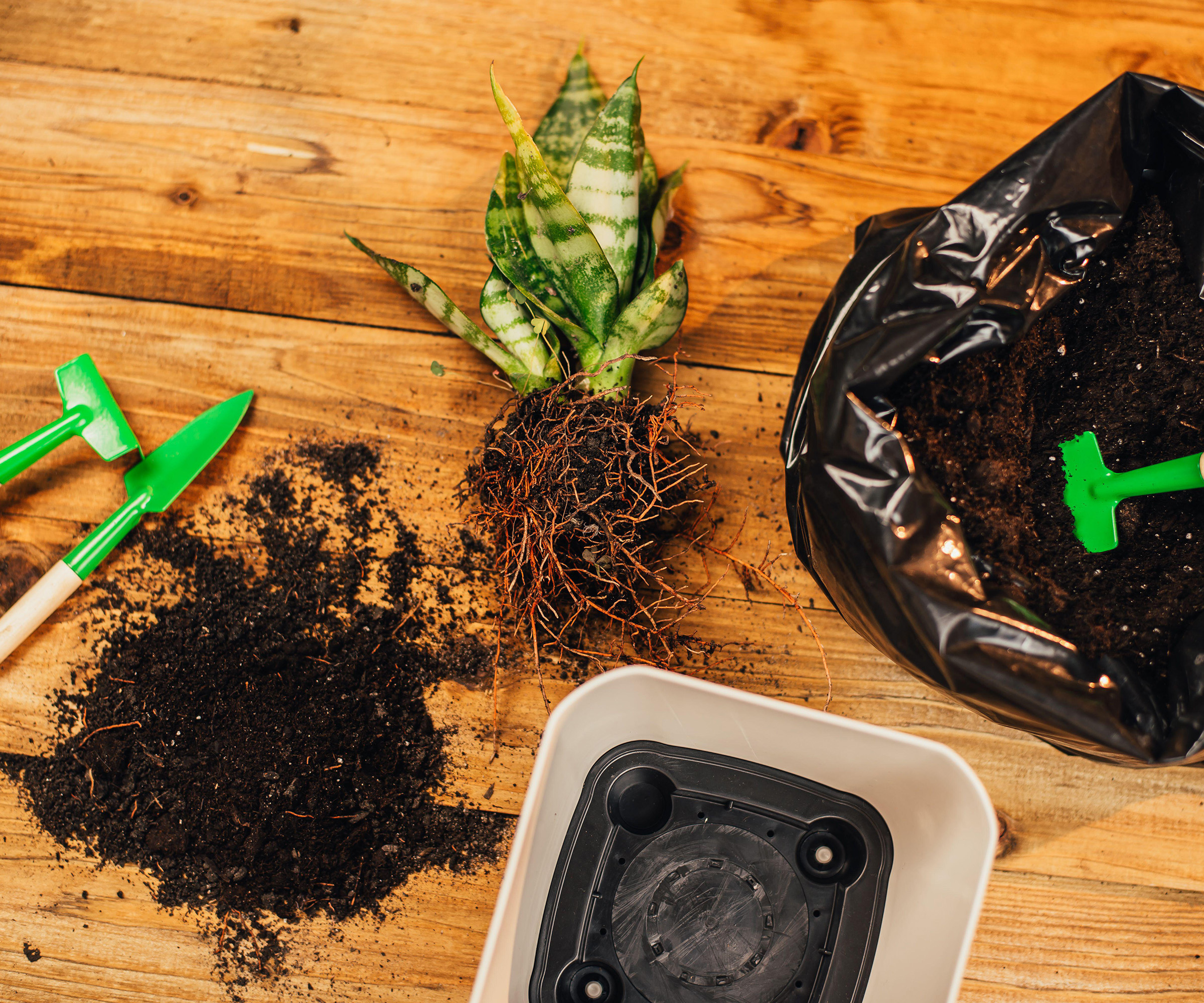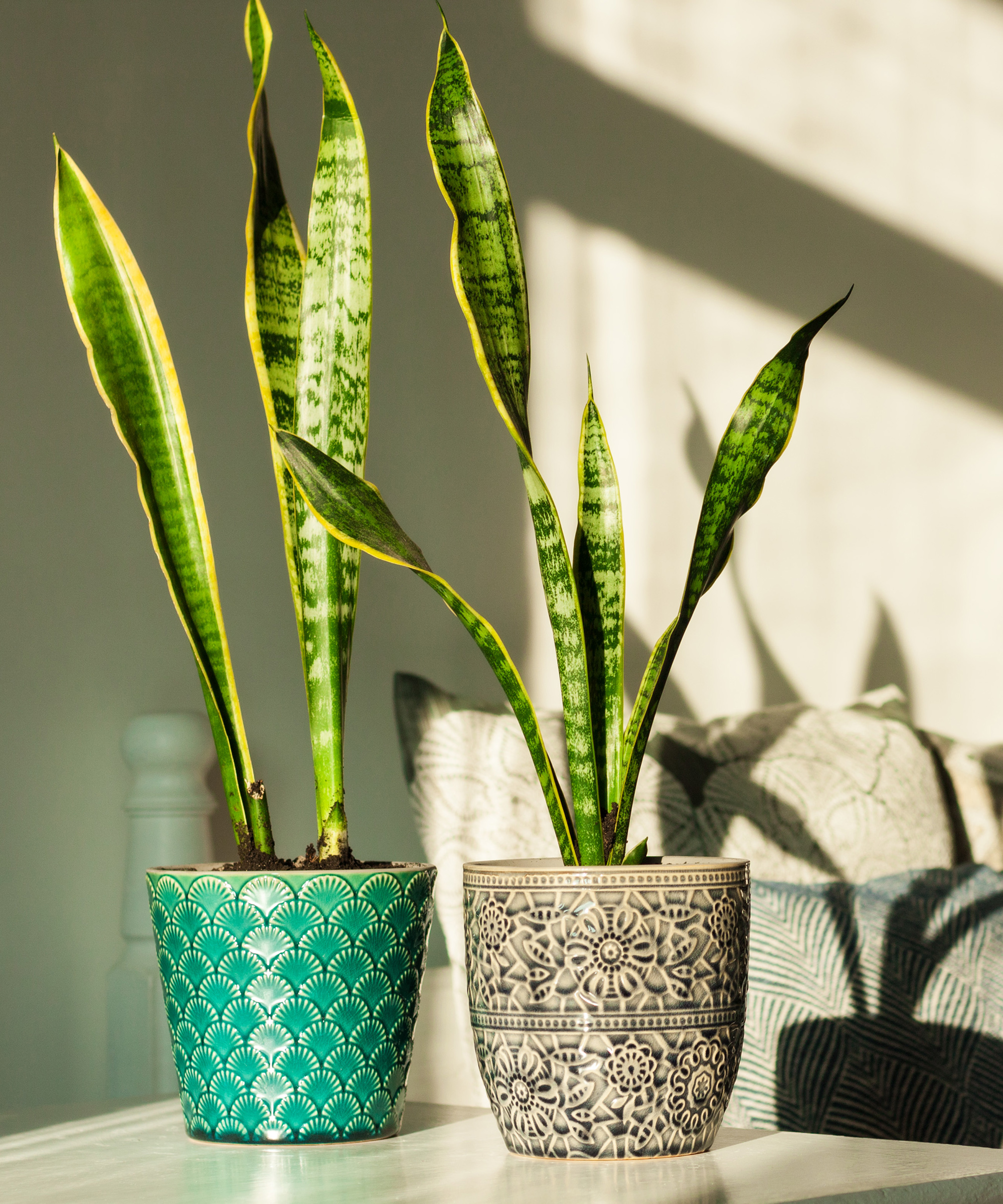5 key signs it's time to repot your snake plant – plus expert tips on how to do it
Identify when your favorite indoor plant has outgrown its current home


Snake plants, or sansevierias, are famous for being low-maintenance. However, knowing how to repot a snake plant and when to do it will help you get the most out of this fast-growing, versatile species.
Snake plants are one of the best indoor plants for many people thanks to their easygoing nature and adaptability to relatively low-light conditions. Repotting yours regularly will ensure that your snake plant grows well and is as healthy as it can be.

Discover when to repot a snake plant with these key signs
The good news is that it's usually quite easy to tell how often to repot your indoor plant. If you spot any of these telltale signs, repot your snake plant sooner rather than later. According to Brody Hall, certified horticulturist of The Indoor Nursery, the main signs your snake plant needs repotting are as follows:

Once your snake plant has outgrown its container, you'll need to repot it to ensure it can continue to grow well
- The roots are sprouting from drainage holes: This is the most common sign of a snake plant that is rootbound and needing a new pot right away.
- The soil drains too quickly: A rootbound snake plant will have difficulty taking up water. If you keep watering it and it collects in the tray underneath, it's time to find your plant a new pot.
- Your snake plant has stopped growing or is growing too slowly: A healthy snake plant pruned regularly can easily grow 10 inches (or more) per year, eventually reaching a height of up to eight feet. If yours is growing significantly under this normal rate, it's likely too big for its pot and has no more room to develop.
- The pot starts cracking or is distorted: In severe cases of a rootbound snake plant, its root system may begin to push at the sides of the pot, expanding or cracking it.
- The plant is flowering: Snake plants only flower when they feel stressed: if yours is flowering it likely is trying to tell you it doesn't have enough room in its pot.

From managing a vineyard to studying horticulture, all the way to obtaining a degree in Environmental Science - Brody loves nothing more than taking his years of knowledge and understanding of ecological science and applying it to the world of gardening.
How to repot a snake plant in 7 quick steps

Regular repotting your snake plant, usually every 3-5 years, is an essential part of caring for these typically low maintenance indoor plants.
According to Aaditya Bhatta, Editor and Founder of Plantscraze, you should follow these steps:
- Pick a new planter: The diameter should be 'about 2in bigger than the one you already have,' says Aaditya Bhatta. 'Make sure you sterilize all instruments and any previously used pots to stop the spread of bacterial, viral, and fungal infections.'
- Hydrate the plant before repotting: 'Water plants at least an hour before starting the snake-plant repotting procedure. This will avoid wilting and lessen transplant shock,' Bhatta advises.
- Remove gently: 'Turn the pot on its side and push or touch the bottom to release the snake plant without injuring its leaves or roots.' Use a similar method when repotting a peace lily too.
- Prune the roots if necessary: As guidance, the color of healthy roots is white or off-white, and they feel firm to the touch. Sections showing deterioration should be cut out. To promote new development, remove or loosen the tangled web of roots.
- Divide the plant: 'Snake plant pups should be removed and replanted for a neater appearance. You can keep these to propagate snake plants for your own indoor garden or give them to friends and relatives.'
- Line the pot: To stop soil from leaking out of the new pot, put a coffee filter, coir liner like this Natural Coco Coir Fiber Liner Roll Sheet at Amazon, or a circle of landscape fabric in the bottom. 'Gravel should not be used in the pot's bottom since it interferes with drainage and can cause root rot.'
- Favor shallow planting: A snake plant should be repotted at the same depth it was before to prevent plant shock. Ensure the soil level is left approximately an inch below the planter's top edge. Water and position in bright but indirect light.

Aaditya worked as a horticulturist for over a decade. He's covered everything from seeding, growing, repotting, pruning, and other caring methods.
FAQs
What is the best type of pot for a snake plant?
Miguel Palma, professional gardener and owner of JardinTienda, explains that 'terracotta pots are best suited for growing snake plants rather than plastic pots since the former allow faster drainage of the soil compared to the latter'.
Choosing the wrong size pot can be one of the reasons your snake plant is dying, so bear this in mind when you're repotting yours. It prefers to be a little restricted, so don't choose one that is too large.

Miguel Palma is a professional gardener with over 20 years of experience in the horticultural business. He is the owner of JardinTienda, a site dedicated to reviewing gardening products and providing independent buyers guides.
What is the best soil mix for a snake plant?
When repotting a snake plant, remember that they prefer very light, free-draining soil. Aaditya Bhatta, founder of Plants Craze, recommends making your own by combining two parts gritty perlite or pumice, one part pine bark, and one part peat moss or coconut coir.
Creating this type of mix 'helps with drainage, but it also means adding fertilizer to the area to give your snake plant the nutrients it need,' he says.
You can also use ready made potting mixes for cacti which have extra drainage, like this Succulent & Cactus Soil at My Perfect Plants.
Keep your soil mix full of nutrients to help your plant grow healthy: 'Once every month or so, you can either fertilize plants with a liquid fertilizer added to the water for your Sansevieria plant, or mix in some slow-release pellets.'
Snake plants are a laid back yet rewarding indoor plant. If you're looking for other low maintenance plants which add height as well as a tropical edge to your displays, take a look at kentia palms.
Sign up to the Homes & Gardens newsletter
Design expertise in your inbox – from inspiring decorating ideas and beautiful celebrity homes to practical gardening advice and shopping round-ups.

Anna is a professional writer and academic. She taught English Literature for several years before joining Future where she wrote for Real Homes, Homes & Gardens and Livingetc for four years. She is a regular contributor for Parade Home, BiggerPockets, and many other publications. In her spare time, Anna enjoys hiking and gardening.
-
 I've spent 200+ hours testing vacuums and tried the viral tea bag vacuum hack to deodorize naturally. The results surprised me
I've spent 200+ hours testing vacuums and tried the viral tea bag vacuum hack to deodorize naturally. The results surprised meIt worked better than I expected, but it's not the most effective method out there
By Dan Fauzi
-
 Martha Stewart's outdoor zoning method is the secret to seamless hosting for summer 2025 – it's changed how I arrange furniture on my patio
Martha Stewart's outdoor zoning method is the secret to seamless hosting for summer 2025 – it's changed how I arrange furniture on my patio11 years ago, Martha shared an intelligent way to organize your outdoor space for hosting season – it's just as smart over a decade later
By Megan Slack